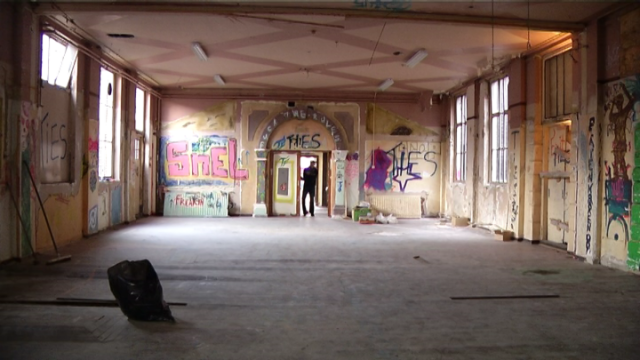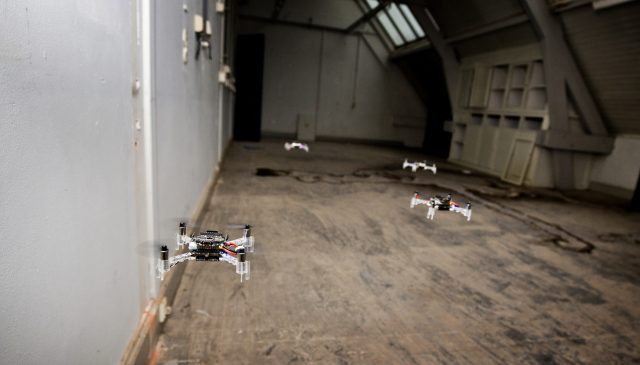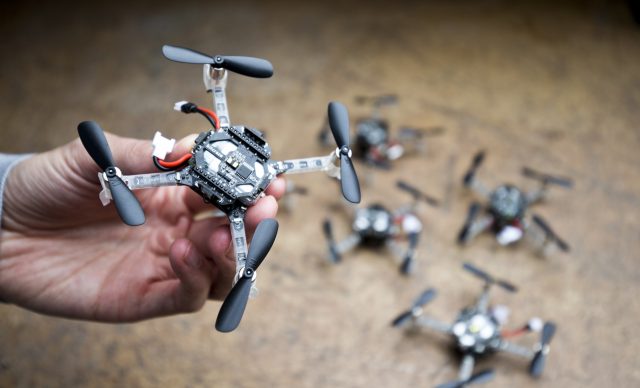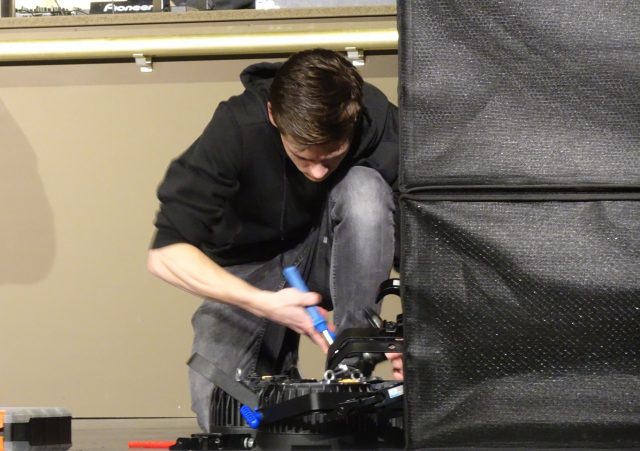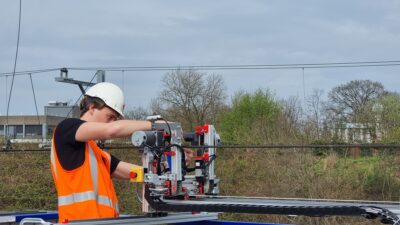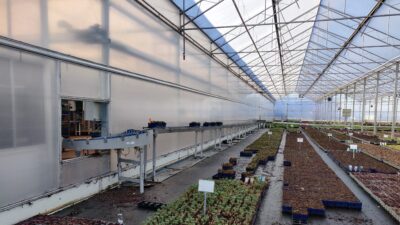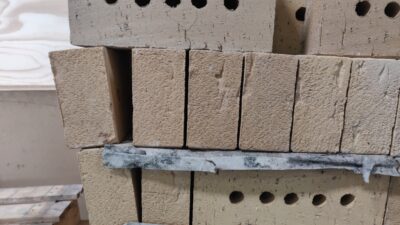An old, abandoned building looks like it is about to collapse. Would you dare to enter it? But if you don’t, you will never know what is inside. MAVLab’s Mario Coppola envisions that swarms of tiny robotic drones will be applied to explore sites that are too dangerous for humans. However for Mike Bootsman, a student in managing sound and lights, these robot swarms could be a instrument for creating more epic and unique light shows. What if you would use this?
“Do you know how birds fly in flocks? They don’t have fixed rules but they relate and adapt to each other continuously”, says Mario Coppola, PhD researcher at the Micro Air Vehicle Laboratory (MAVLab) on the TU Delft Campus.
MavLab uses the principles of natural bird navigation in its algorithms for swarms of tiny robots that can fly through small openings and avoid collisions. These 33g drones are commercially available products. They are light and cheap, and MAVlab has made them smart as a collective. The core of this collective intelligence is the ability of each individual to talk to its companion close-by and form a network of information. Simple sensorial input from simple robots, can thus result in highly complex maps created by a swarm.
“The swarm could also help to manage warehouses or regulate crops.”
Mario Coppola, PhD Researcher at MAVLab
A current goal of MAVLab is to make robot sizes even smaller, their manoeuvres more flexible and their collaboration optimally smooth. Mario’s focuses is on the latter. He is enabling the swarm to create its own patterns for autonomous navigation. “Exploring buildings is not the only purpose that we can think of,” says Mario. “The swarm could also help to manage warehouses or regulate crops”. Agriculture, emergency services, surveillance and security; these are the obvious uses that spring to mind for these robotic swarms.
But these areas of applicaton are only what the researchers themselves expect to happen. History tells us that innovation often takes a rather more unpredictable route. Once a new technology becomes widely available, the world tends to embrace it in ways that its inventors almost never manage to predict. Inspired by this phenomenon, this article series takes early-stage robotics from the research lab and brings it to a randomly selected workplace in the outside world – asking professionals we meet there: What if you would use this?
We took MAVLab’s tiny robots and a presented them to Mike Bootsman, a student in sound and lights management during live events.

His first impression about the tiny drones says a lot: “Normally these toys are for children, right?”. Can you blame him? The photos show some seemingly simple plastic product. But then he comes around and explains his Eureka moment: “Ah they work together! It’s like ‘many hands make light work’, so with these small things you can do big tasks”.
“Ah they work together! It’s like ‘many hands make light work’, so with these small things you can do big tasks”.
Mike Bootsman, student sound and light management
When organising an event, students are often asked to make a plan of the sound and lighting prior to the build-up. Mike says it takes a lot of effort to measure the spaces and map them. Especially in 3D, which is important for echo and reflection, it is often a hard task. He says: “If I could just send a pack of drones who would deliver me a map of how sound works in that specific location, it would save me a lot of the basic work. Maybe we could even add little speakers and microphones to test it for real!”.
But that is not the only idea he has. He suggests tracking all artists individually to make an even more epic and customised light show. The drones themselves could also make a big choreographed show, based on the room and the people. Or maybe just use the analytics to heighten the efficiency of employees, so the back-stage logistics are perfected. “Or is that too crazy?”, Mike asks in the end.
Want to know more about swarm exploration by tiny flying robots? Take a look a the explainer by MAVLab.
